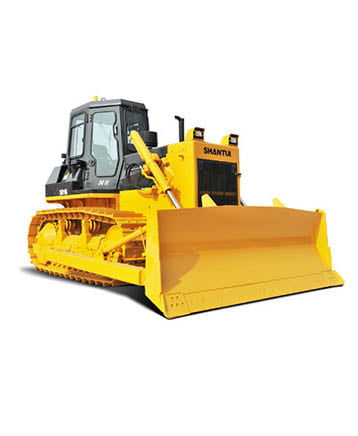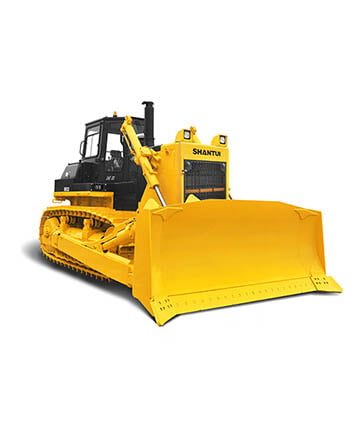Introduction
When it comes to the world of construction and earth-moving, one heavy-duty machine stands out for its sheer power and versatility: the bulldozer. This colossal engineering marvel has been instrumental in shaping landscapes, building infrastructure, and assisting in various construction projects across the globe. In this article, we will delve into the fascinating world of bulldozer construction, exploring its history, design, applications, and the future it holds in modern construction. Join us as we unearth the secrets behind these rugged giants and how they play an indispensable role in our world today.
The Evolution of Bulldozer Technology

Origins and Early Innovations
The origins of the bulldozer can be traced back to the late 1800s when the concept of a machine capable of moving earth first emerged. However, these early versions were far from the powerful and sophisticated bulldozers we know today. The initial designs were relatively primitive and mainly focused on providing basic functionalities for agricultural purposes.
The early bulldozer-like machines were often drawn by horses and had manual controls that required significant physical effort from the operator. These machines were primarily used for plowing fields and clearing debris, making farm work more manageable and efficient. As the demand for agricultural productivity grew, so did the need for more advanced earth-moving equipment.
The Rise of Hydraulic Bulldozers
The invention of the hydraulic bulldozer revolutionized the industry. Hydraulic systems allowed for greater power, control, and efficiency in moving earth. We’ll investigate the key breakthroughs that led to this game-changing innovation.
Anatomy of a Bulldozer
Understanding the Key Components
To truly grasp the capability of bulldozers, it’s essential to know their key components. From blades and tracks to the engine and cabin, we’ll break down the anatomy of a bulldozer and its functionalities.
Types of Bulldozer Blades and Their Applications
Not all blades are created equal. Bulldozers boast various blade types, each serving specific purposes such as pushing, digging, or spreading materials. We’ll explore the different blades and their applications.
Bulldozer Applications in Construction
Land Clearing and Site Preparation
One of the primary uses of bulldozers is land clearing and site preparation. We’ll discuss how these machines efficiently clear obstacles, level terrain, and make way for new construction projects.
Road Construction and Maintenance
Bulldozers play a vital role in road construction, from grading the surface to compacting the materials. We’ll dive into how these workhorses contribute to building and maintaining roads and highways.
Mining and Quarry Operations
In the mining and quarrying industry, bulldozers are essential for moving vast amounts of earth and extracting valuable minerals. We’ll explore the critical tasks they perform in these demanding environments.
Safety Measures and Environmental Impact

Ensuring Safe Bulldozer Operations
Operating a bulldozer comes with inherent risks. We’ll discuss the safety measures and training required to ensure the well-being of operators and those working around the machines.
Sustainable Practices in Bulldozer Construction
As environmental consciousness grows, the construction industry is also embracing greener practices. We’ll look into how bulldozer manufacturers and construction companies are adopting sustainable approaches.
The Future of Bulldozer Construction
Advancements in Technology
In the 21st century, bulldozer construction has seen a remarkable leap forward with cutting-edge technological advancements. Engineers and manufacturers have continuously pushed the boundaries to make these powerful machines even more efficient, productive, and environmentally friendly.
One of the most significant advancements in bulldozer technology is the integration of advanced GPS (Global Positioning System) technology. GPS-equipped bulldozers offer precise positioning and guidance, allowing operators to work with unparalleled accuracy. This technology enables the creation of 3D models of construction sites, enabling efficient grading and earth-moving operations. With GPS, bulldozers can achieve the desired level of precision, reducing waste and optimizing time spent on projects.
Additionally, the implementation of telematics systems in modern bulldozers has revolutionized the way these machines are monitored and managed. Telematics provide real-time data on various aspects of the bulldozer’s performance, including fuel consumption, engine health, and maintenance needs. This data-driven approach allows construction companies to better plan their operations, reduce downtime, and proactively address maintenance issues, resulting in increased productivity and cost savings.
Addressing the Challenges
Despite the impressive advancements in bulldozer technology, the industry continues to face various challenges that demand innovative solutions. Manufacturers, engineers, and construction companies are actively addressing these hurdles to enhance the efficiency, safety, and sustainability of bulldozer construction.
One of the primary challenges is improving the maneuverability and versatility of bulldozers in tight or confined spaces. Construction sites often feature limited access and congested areas, making it challenging for large bulldozers to navigate smoothly. To tackle this issue, engineers are exploring the development of compact yet powerful bulldozers that can handle intricate tasks while maintaining their earth-moving prowess.
Another crucial aspect is the optimization of fuel efficiency. Bulldozers are heavy consumers of fuel, and reducing their environmental impact is a priority. Manufacturers are continuously refining engine designs and adopting hybrid technology to improve fuel economy without compromising performance. Electric-powered bulldozers have shown great promise in this regard, and ongoing research aims to make them more viable for various construction applications.
Conclusion
Bulldozers have been an integral part of construction and earth-moving operations for over a century. Their evolution from basic horse-drawn implements to powerful hydraulic machines showcases human ingenuity and engineering prowess. Today, bulldozer construction continues to push boundaries and redefine the way we shape our world. As technology continues to advance, these robust giants will play a pivotal role in building a better tomorrow.
FAQs
- How much horsepower does a typical bulldozer have?
- The horsepower of bulldozers can vary widely depending on the model and size, but it usually ranges from 80 to 600 horsepower.
- Can bulldozers be used underwater?
- Some specialized bulldozers can be used in shallow water or wetlands, but they are not typically designed for extensive underwater operations.
- What are the main differences between a bulldozer and a scraper?
- While both machines are used in construction, bulldozers primarily push and move earth, while scrapers are designed to collect and transport large quantities of materials.
- Are there any safety risks associated with bulldozer operations?
- Yes, operating bulldozers carries inherent risks, such as rollovers, visibility issues, and potential accidents on uneven terrain. Proper training and safety measures are crucial.
- Can bulldozers be equipped with GPS technology for precise grading?
- Yes, many modern bulldozers are equipped with GPS technology, allowing for precise grading and improving overall efficiency in construction projects.

